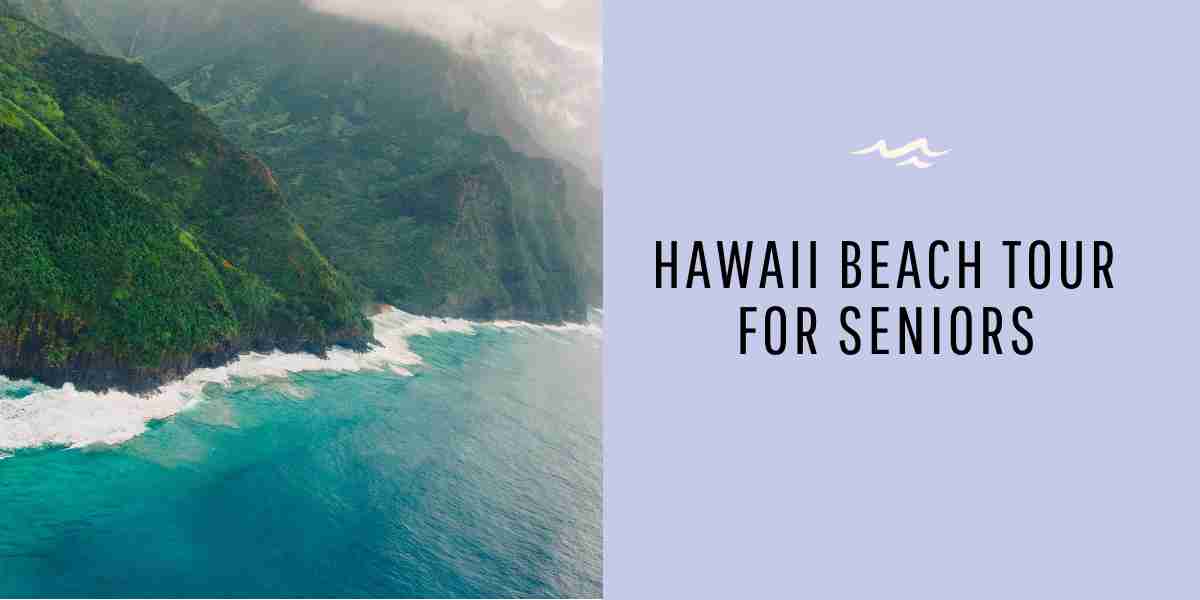Hawaiian Tours for Seniors: Imagine serene beaches, lush landscapes, and vibrant culture, all tailored for a relaxing and enriching experience. This guide explores the best Hawaiian islands for senior travelers, focusing on accessibility, suitable activities, and ensuring a comfortable and memorable vacation. We’ll delve into transportation options, health considerations, budget planning, and the rich cultural experiences waiting to be discovered.
From gentle hikes amidst breathtaking scenery to immersive cultural encounters, we’ll uncover the unique aspects of each island, highlighting senior-friendly accommodations and activities that cater to various mobility levels. We’ll also provide practical tips for planning your trip, ensuring a seamless and enjoyable journey for you or your loved ones.
Suitable Hawaiian Islands for Senior Tours
Choosing the perfect Hawaiian island for a senior tour requires careful consideration of accessibility, transportation options, and the types of activities available. Each island offers a unique experience, and understanding the nuances of each will help ensure a comfortable and enjoyable trip for older travelers. This section will compare Oahu, Maui, Kauai, and the Big Island, highlighting their suitability for senior visitors.
Island Accessibility and Suitability for Seniors
Oahu, home to Honolulu, offers excellent accessibility with relatively flat terrain in many areas, particularly around Waikiki. Public transportation, including buses and TheBus, is readily available, although navigating some areas might require more effort. Maui also boasts good accessibility in resort areas like Wailea and Kaanapali, but exploring the Road to Hana requires more physical endurance. Kauai, known for its dramatic landscapes, presents more challenges with steeper terrain and fewer readily accessible areas. The Big Island, the largest and most geographically diverse, offers varied accessibility; some areas are easily navigable, while others, like Volcanoes National Park, require more physical exertion. Therefore, Oahu and Maui generally offer the best accessibility for seniors, while Kauai and the Big Island require more careful planning and consideration of individual mobility.
Senior-Friendly Accommodations in Hawaii
Many Hawaiian hotels and resorts cater specifically to senior travelers, offering a range of amenities and services designed for comfort and convenience. On Oahu, hotels in Waikiki often provide accessible rooms, roll-in showers, and assistance with luggage. Maui resorts in Wailea and Kaanapali typically offer similar amenities, along with concierge services to assist with booking tours and transportation. Kauai’s resorts may have fewer accessible rooms compared to Oahu and Maui, but many offer adapted facilities and assistance upon request. The Big Island’s accommodations vary widely depending on the location; some resorts offer excellent senior-friendly amenities, while others may be less accessible. Consider booking accommodations with features like elevators, ground-floor rooms, and grab bars in bathrooms for easier navigation. Many hotels also offer packages including transportation and assisted activities.
Sample 7-Day Oahu Senior Tour Itinerary
This itinerary focuses on gentle activities and minimal strenuous exertion.
Day 1: Arrival in Honolulu and check-in to Waikiki hotel. Relax and enjoy the beach.
Day 2: Pearl Harbor visit (accessible transportation and options available).
Day 3: Polynesian Cultural Center (accessible pathways and shows).
Day 4: Honolulu city tour by accessible bus, visiting Iolani Palace and historic sites.
Day 5: Relaxing day at Waikiki Beach, enjoying the ocean views and gentle strolls.
Day 6: Diamond Head Crater scenic overlook (accessible options to the lower viewpoints).
Day 7: Departure from Honolulu.
Sample 7-Day Maui Senior Tour Itinerary
This itinerary prioritizes accessible locations and avoids strenuous hikes.
Day 1: Arrival in Maui and check-in to a Wailea or Kaanapali resort. Relax by the pool.
Day 2: Whale watching tour (seasonal, choose a stable boat).
Day 3: Explore Lahaina town, enjoying the shops and historical sites.
Day 4: Relaxing day at Kaanapali Beach, enjoying the calm waters.
Day 5: Road to Hana (limited driving, focus on accessible viewpoints and shorter stops).
Day 6: Upcountry Maui tour, visiting lavender farms and scenic overlooks (choose accessible locations).
Day 7: Departure from Maui.
Sample 7-Day Kauai Senior Tour Itinerary
This itinerary emphasizes accessible areas and avoids strenuous activities. It may require pre-booking accessible transportation.
Day 1: Arrival in Kauai and check-in to a resort near Lihue.
Day 2: Poipu Beach exploration (calm waters, accessible beach access).
Day 3: Wailua River boat tour (choose a stable boat with easy boarding).
Day 4: Spouting Horn and other coastal viewpoints along the south shore (accessible viewing points).
Day 5: Koloa town exploration (accessible walkways and shops).
Day 6: Relaxing day at the resort, enjoying the amenities.
Day 7: Departure from Kauai.
Sample 7-Day Big Island Senior Tour Itinerary
This itinerary focuses on accessible areas and avoids strenuous hikes. Pre-booking transportation for certain locations is highly recommended.
Day 1: Arrival on the Big Island and check-in to a Kona resort.
Day 2: Kona town exploration, visiting coffee plantations and shops.
Day 3: Punalu’u Black Sand Beach (accessible viewing areas).
Day 4: Volcanoes National Park (focus on accessible areas like the Jaggar Museum overlook).
Day 5: Mauna Kea Observatories (consider a guided tour with accessible transportation).
Day 6: Relaxing day at the resort, enjoying the amenities.
Day 7: Departure from the Big Island.
Tour Activities and Accessibility
Planning a Hawaiian vacation for seniors requires careful consideration of activities and accessibility. We aim to create a memorable and comfortable experience for all participants, ensuring that everyone can enjoy the beauty and culture of the islands. This section details suitable activities and the accessibility features available at popular tourist attractions.
Hawaii offers a diverse range of low-impact activities perfect for seniors. Gentle hikes along coastal trails provide stunning ocean views without strenuous climbs. Scenic drives, such as the Road to Hana on Maui or the coastal highway on Kauai, allow for breathtaking vistas with minimal physical exertion. Cultural experiences, including attending a traditional luau with seated viewing or visiting historical sites with accessible pathways, provide enriching and engaging alternatives to more physically demanding activities.
Low-Impact Activities for Seniors in Hawaii
Many Hawaiian attractions cater to varying levels of mobility. Several options minimize physical strain while maximizing enjoyment. These include:
- Gentle coastal walks: Numerous trails offer relatively flat terrain with spectacular ocean views. These walks can be easily adjusted in length to suit individual fitness levels.
- Scenic drives: Exploring the islands by car allows for leisurely sightseeing, stopping at viewpoints and attractions as desired. This eliminates the need for extensive walking.
- Cultural immersion: Attending a luau or visiting a historical site offers a rich cultural experience without demanding physical activity. Many venues provide seating and accessible pathways.
- Boat tours: Whale watching tours or sunset cruises provide stunning views and relaxation without requiring physical exertion. Many operators offer accessible boarding and seating.
Accessibility Features at Popular Tourist Attractions
Accessibility varies across different attractions and islands. However, many popular tourist destinations are making significant efforts to improve accessibility for visitors with mobility limitations. This includes:
- Wheelchair access: Many major attractions, including museums, historical sites, and some beaches, offer wheelchair-accessible ramps, elevators, and restrooms.
- Accessible transportation: The islands offer accessible transportation options, including taxis, shuttle services, and some bus routes. Pre-booking accessible transportation is recommended.
- Assistive devices: Some attractions provide wheelchairs or other assistive devices for rent. Inquire in advance to confirm availability.
- Designated seating: Many venues, including luaus and theaters, offer designated seating areas for individuals with mobility limitations.
Accessibility Comparison Across Hawaiian Islands
The level of accessibility can vary between islands and specific attractions. The following table provides a general comparison, keeping in mind that individual experiences may differ.
| Activity | Oahu | Maui | Kauai |
|---|---|---|---|
| Whale Watching Tours | Generally good accessibility, check individual operators. | Generally good accessibility, check individual operators. | Generally good accessibility, check individual operators. |
| Luau | Most luaus offer accessible seating and facilities; confirm in advance. | Most luaus offer accessible seating and facilities; confirm in advance. | Most luaus offer accessible seating and facilities; confirm in advance. |
| Historical Sites (e.g., Pearl Harbor, Iolani Palace) | Pearl Harbor offers excellent accessibility; Iolani Palace has some limitations. | Accessibility varies widely; check specific sites in advance. | Accessibility varies widely; check specific sites in advance. |
| Scenic Drives | Generally good accessibility, though some roads may be narrow. | Road to Hana has some challenging sections; alternative routes are available. | Some coastal roads are narrow; plan accordingly. |
Health and Safety Considerations
Planning a Hawaiian vacation requires careful consideration of health and safety, especially for senior travelers. Ensuring a smooth and enjoyable trip involves proactive measures to address potential health concerns and emergencies. This section details essential steps to prioritize your well-being throughout your Hawaiian adventure.
Essential Health and Safety Tips for Senior Travelers
Prioritizing health and safety is paramount for a successful trip. This includes preparation before departure and awareness during your stay. The following tips are designed to help mitigate potential risks and ensure a worry-free experience.
- Travel Insurance: Secure comprehensive travel insurance that covers medical emergencies, evacuations, and trip cancellations. Consider policies that specifically address pre-existing conditions.
- Vaccinations: Consult your physician regarding recommended vaccinations at least six weeks prior to your trip. While no mandatory vaccinations exist for Hawaii, your doctor may recommend updates based on your medical history and travel plans.
- Emergency Contacts: Prepare a list of emergency contacts including family, friends, your physician, and your travel insurance provider. Keep this information readily accessible.
- Medication: Pack all necessary medications in their original containers, with sufficient quantities to last throughout the trip, plus a few extra days’ worth. Carry a copy of your prescription.
- Hydration: Hawaii’s tropical climate can lead to dehydration. Drink plenty of water throughout the day, especially during outdoor activities.
- Sun Protection: The Hawaiian sun is strong. Use high SPF sunscreen, wear protective clothing, and seek shade during peak sun hours.
Medical Facilities and Services in Hawaii
Hawaii offers a robust healthcare system across its islands. Access to medical services varies slightly by island, but quality care is generally readily available.
- Hospitals: Each major island has at least one fully equipped hospital offering emergency and specialized care. Larger islands, such as Oahu, have multiple hospitals.
- Clinics: Numerous clinics and urgent care centers are scattered across all islands, providing convenient access to non-emergency medical services.
- Pharmacies: Pharmacies are widely accessible, both independently owned and within larger retail stores. Many pharmacies offer prescription refills and over-the-counter medications.
Potential Health Risks and Preventative Measures
While Hawaii is generally a safe and healthy destination, seniors should be aware of potential health risks and take preventative measures.
- Heatstroke: Hawaii’s tropical climate can cause heatstroke, particularly for those not accustomed to high humidity and temperatures. Stay hydrated, wear light clothing, and avoid strenuous activity during the hottest parts of the day.
- Altitude Sickness: While Hawaii doesn’t have extremely high altitudes, some volcanic areas can cause mild altitude sickness in susceptible individuals. Ascend gradually and take it easy on your first day at higher elevations.
- Insect Bites: Mosquitoes and other insects are present in Hawaii. Use insect repellent containing DEET, wear long sleeves and pants when appropriate, and consider staying in air-conditioned spaces during peak insect activity times.
Cultural Experiences for Seniors
Immersive cultural experiences are paramount to a fulfilling Hawaiian vacation, particularly for senior travelers seeking enriching and memorable moments. These experiences offer a deeper understanding of the islands’ unique heritage and provide opportunities for meaningful connection with the local culture. They move beyond typical tourist activities, offering a more profound and personally resonant journey.
Engaging with Hawaiian culture provides seniors with a chance to connect with the islands on a deeper level, fostering a richer travel experience that extends beyond sightseeing. Participation in traditional activities and interactions with local artisans allows for a more authentic and personal understanding of the islands’ history and heritage, creating lasting memories.
Traditional Hawaiian Luau
A traditional Hawaiian luau offers a vibrant and sensory feast for all the senses. Imagine arriving at a lush outdoor venue, perhaps nestled amongst swaying palm trees under a star-studded sky. The air is thick with the fragrant aroma of kalua pig, roasted in an underground oven (imu) for hours, its smoky sweetness mingling with the scent of tropical flowers and plumeria. The sounds of traditional Hawaiian music – the gentle strumming of ukuleles, the rhythmic beat of drums, and the enchanting melodies of voices – fill the air, creating a captivating atmosphere. As the sun sets, the vibrant colors of the dancers’ costumes – bold hibiscus prints, intricate featherwork, and flowing fabrics – dance under the lights, telling stories through graceful movements and powerful expressions. The taste of the luau feast is equally unforgettable: succulent kalua pig, tender poi (a starchy paste made from taro root), fresh fish, and an array of tropical fruits. The visual spectacle of the fire dancers, their bodies illuminated by flames, adds an element of excitement and wonder, leaving a lasting impression. The entire experience is a harmonious blend of sights, sounds, smells, and tastes, creating a deeply immersive and memorable cultural experience.
Visiting Historical Sites
Exploring historical sites offers seniors a glimpse into Hawaii’s rich past. Sites such as Iolani Palace, the only official residence of royalty in the United States, provide a fascinating look at Hawaiian monarchy and its unique history. The palace’s architecture, furnishings, and stories of its inhabitants offer a captivating journey through time. Similarly, exploring ancient Hawaiian heiau (temples) provides insights into the spiritual beliefs and practices of the native Hawaiians. These sites, often located in serene natural settings, offer opportunities for reflection and a deeper understanding of the islands’ cultural heritage. The stories and artifacts preserved at these sites paint a vivid picture of the past, enriching the overall travel experience.
Interacting with Local Artisans
Engaging with local artisans provides a unique opportunity to witness traditional crafts firsthand and connect with the creative spirit of the islands. Observing a lei maker crafting intricate floral arrangements, a wood carver shaping intricate designs, or a kapa maker creating traditional bark cloth, offers a captivating glimpse into the artistry and cultural heritage of Hawaii. These interactions offer a chance to learn about the techniques and traditions involved in these crafts, fostering a deeper appreciation for the island’s cultural heritage and providing opportunities for meaningful conversations with the artisans themselves. The purchase of a handcrafted item serves as a tangible reminder of the experience and supports local artisans.
Conclusive Thoughts
Planning a Hawaiian vacation as a senior doesn’t have to be daunting. With careful consideration of accessibility, suitable activities, and thoughtful planning, a trip to Hawaii can be an unforgettable experience filled with relaxation, cultural immersion, and the creation of lasting memories. This guide aims to empower you with the knowledge and resources needed to plan a safe, enriching, and truly Hawaiian adventure.




